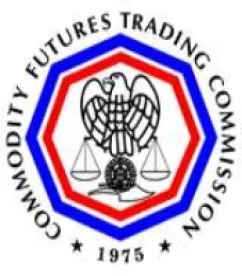For the second time since 2013, when the Commodity Futures Trading Commission (CFTC) issued its still-pending pair of position limits rulemaking proposals,[1] the CFTC has proposed to revise those 2013 proposals.[2] Specifically, on June 13, 2016, the CFTC published a much anticipated amendment to its 2013 Position Limits Proposal that, if adopted, would, among other things, permit CFTC-registered futures exchanges– such as NYMEX and ICE Futures U.S.– and approved swap execution facilities (SEFs) to grant non-enumerated Bona Fide Hedge exemptions to market participants applying for such exemptions.[3] Comments on the 2016 Supplement are due on July 13, 2016.
The Problem with the 2013 Proposals
Market participants identified a number of concerns with both 2013 proposals, some of which were addressed in the CFTC’s Energy and Environmental Markets Advisory Committee (EEMAC) meetings held on February 26, 2015 and July 29, 2015. The particular issue involved in the 2016 Supplement relates to the “Bona-Fide Hedge” (BFH) exemption to position limits that, if granted, would allow the exemption holder to exceed the spot-month or other position limits established by the CFTC. In its 2013 Position Limits Proposal, the CFTC separated BFHs into those that were “enumerated” and those that were “non-enumerated” (which the CFTC refers to as NEBFH). The enumerated hedge concept – borrowed from the CFTC’s existing, albeit limited, federal position limits rules that apply to nine “legacy” agricultural contracts[4] – basically allows a party that satisfies the criteria for an enumerated BFH to readily apply for a BFH exemption and thus exceed the position limits,[5] while a party that has a NEBFH would face a much tougher path to satisfy the CFTC criteria for a hedge exemption.
Because the 2013 Position Limits Proposal would significantly expand the scope of federal (CFTC-set) position limits beyond the current nine contracts to 28 core energy, metals, and agricultural contracts and their related futures and over-the-counter (OTC) swap contracts, the CFTC’s attempt to fit all legitimate risk mitigation efforts used by commercial firms into a handful of pre-defined hedge strategies has proven to be controversial. Many commenters have filed comments addressing the overly restrictive hedge categories. To make matters worse, the CFTC also proposed to significantly restrict the process for obtaining a NEBFH. That is, rather than seek CFTC action within 30 days under current CFTC rule 1.47,[6] the 2013 Position Limits Proposal would force NEBFH applicants into one of two burdensome and non-time-delimited processes to either (1) seek an interpretative letter from CFTC staff under rule 140.99; or (2) file for formal CFTC-level exemptive relief under section 4a(a)(7) of the Commodity Exchange Act (CEA).
The significant controversy surrounding the proposed BFH and NEBFH processes led to discussions at the CFTC’s July 29, 2015 EEMAC meeting about ways to streamline the hedge approval process.[7] Among other things, representatives from CME Group, which owns NYMEX, and ICE Futures, presented proposals for exchanges to perform NEBFH determinations. As a result of those meetings, it was widely believed that the CFTC would issue a proposal similar to the 2016 Supplement.
NEBFH Process at Exchanges
The 2016 Supplement makes several changes to the 2013 Position Limits Proposal, the most important of which is to authorize, and establish broad process parameters for, futures exchanges and SEFs to review and approve NEBFH applications. In lieu of submitting a NEBFH application to an exchange, a market participant also may continue to request an interpretative letter or exemptive relief from the CFTC.
Consistent with its principals-based regulation of futures exchanges and SEFs, the 2016 Supplement would adjust the “Core Principals” that futures exchanges and SEFs must follow, thus allowing individual futures exchanges and SEFs some flexibility to design NEBFH application processes.
However, the 2016 Supplement does contain several conditions on NEBFH application processing by exchanges. Among other things:
-
Limitation on certain contracts. An exchange electing to process NEBFH applications may do so only if (i) the contract is a “referenced” contract, [8] (ii) the exchange lists such contract for trading, (iii) the contract is actively traded on the exchange,[9] (iv) the exchange has established limits for such contract,[10] and (v) the exchange has a year’s experience administering limits for such contracts. An exchange may not recognize a NEBFH position involving a commodity index contract.
-
Burdens on applicants. The exchange NEBFH process must elicit “sufficient information” from the applicant to allow the exchange to determine, and the CFTC to verify, whether the hedge meets the BFH standards, including: (i) “detailed” information demonstrating why the hedge satisfies CEA section 4a(c) and the general hedge definition in proposed rule 150.1, (ii) maximum size of positions (gross) to be acquired over the next year, and (iii) detailed information about the applicant’s cash market activity during the past 3 years. The exchange must also enact rules requiring applicants to report to the exchange when they own or control derivatives positions that were recognized as NEBFH positions, and any offsetting cash positions as well as any necessary updates.
-
Annual application; notification. The process must require an applicant to submit an application and reapply each year and must require the exchange to notify the applicant in a “timely manner” if the application is accepted or rejected (including reasons for any rejection), and whether it asked the CFTC to consider the application under proposed rule 159(a)(8).[11]
-
Exchange recordkeeping and reporting. The exchange must keep full and complete records of applications, including all data and decisions, related to NEBFHs (including oral communications, i.e., phone calls) and must file detailed reports to the CFTC each week of each NEBFH granted and must, at least monthly, submit all NEBFH reports submitted by applications to the CFTC.
-
CFTC review. The CFTC, in its discretion, “at any time” may review the NEBFH applications submitted to exchanges and all records related to such applications, during which time the applicant can still rely on the exemption. Under a process described in proposed section 150.9(d), the CFTC can reverse the decision of the exchange and the applicant will be given a commercially reasonable time to liquidate the position exceeding the position limits.
-
Spot month issue. An exchange can approve NEBFH exemptions for positions held during the spot month, but the CFTC requests comment on whether to prohibit NEBFH exemptions during the spot month (typically the last three or five days of trading), or to condition such an exemption upon additional filings to the exchange about the applicant’s cash market holdings in the spot month.[12]
If an exchange approves a NEBFH:
-
The NEBFH exemption shall be deemed effective as of the date of the exchange’s notification to the applicant. The applicant could rely on that determination unless and until it is notified otherwise.
-
The exchange must publish on its website, at least quarterly, the fact patterns of derivative positions that qualified as NEBFHs.
Many of these processes resemble current processes for obtaining hedge exemptions at the exchange level for exchange-set limits. However, there are several new issues to consider, as discussed in the final section.
Other Aspects of the 2016 Supplement
The proposal also makes other changes to the 2013 Position Limits Proposal. For example, the supplement proposes changes to the definitions of “bona fide hedging position” that, in practice, appear primarily to be minor clarifications. First, the proposal recommends the elimination of the “incidental test” adopted in previous iterations of the general BFH definition in the CFTC rules, but the reason is not to make hedging applications easier, but rather, as the CFTC notes, the incidental test is already included in the “economically appropriate” test. Similarly, the proposal recommends dropping the “orderly trading” requirement from the general BFH definition because the meaning of the orderly trading requirement in the context of over-the-counter swaps markets is unclear, and because orderly trading is already required on the regulated futures markets.[13]
The 2016 Supplement would also allow certain “spread” exemptions from federal position limits, subject to CFTC review. Specifically, it proposes a process to permit exchanges to recognize exemptions from exchange and federal position limits for “certain positions normally known to the trade as spreads,” such as calendar spreads, quality differential spreads, processing spreads, and product or by-product differential spreads. Similar to the NEBFH application process, the proposal requires the exchange rules to elicit detailed information concerning such hedges in order to process spread hedge applications.[14]
The CFTC is also proposing a delay in the implementation of SEF-enforced position limits for swaps on SEFs that do not have access to sufficient swap position information to monitor and enforce such limits, such as knowledge of OTC swaps not traded on SEFs. As a practical matter, this means that for the time being, SEFs will not be required to implement a position limit regime for swaps that are economically equivalent to core referenced futures contracts. Thus, to the extent that the 2013 Position Limits Proposal is finalized, any position limits on swaps would have to be monitored by commercial firms themselves.
The 2016 Supplement would also provide an expedited process for exchange recognition of enumerated “anticipatory” bona fide hedges – namely the anticipatory hedges listed in the 2013 Position Limits Proposal for:
-
Unfilled anticipated requirements;
-
Unsold anticipated production;
-
Anticipated royalties;
-
Anticipated service contract payments or receipts; and
-
Anticipatory cross-commodity hedge positions.
That process would allow another method by which market participants may have the above enumerated anticipatory BFH positions recognized. Now, in addition to allowing applicants to file applications with the CFTC in advance in exceeding any limits (under proposed rule 150.7), a new process in proposed section 150.11 could be used. Section 150.11 would generally require a process for exchange approval similar to those for NEBFHs.
Unfortunately, despite the fact that anticipatory merchandising–a common hedge that was inexplicably excluded from the 2013 Position Limits Proposal–was discussed in the EEMAC meetings and generally recognized in the industry as a standard, “plain vanilla” hedge (especially for storage asset owners and lessees), the CFTC did not address anticipatory merchandising in this rulemaking. [15] This rulemaking would have been a good place to resolve the controversial issue of excluding such hedge in the 2013 proposal. Instead, market participants may wish to remind the CFTC of existing, detailed comments regarding this hedge.[16]
Client Considerations
Active participants in the energy, metals, and agricultural futures and swaps markets should carefully review the 2016 Supplement in order to identify issues of particular concern for comments. Throughout the Dodd-Frank rulemaking process at the CFTC, public comments often have played an important role in improving final rules.
For example, the proposal would prohibit exchanges from granting NEBFH applications for products that have less than one year of position limits administration experience. However, for new products that are mere look-alikes of other contracts or combinations of contracts that have existing exchange-set position limits (for example, calendar spreads or seasonal products), the one-year restriction may not be necessary and may simply constrict liquidity in the new product.
As noted above, the 2016 Supplement also proposes to limit NEBFH approvals to “actively traded” contracts. Currently, exchanges have the discretion to enforce position limits by considering the open interest of the contract and granting an appropriate level for a hedge given that open interest. Allowing exchanges to adjust exemption size may be a better way to address the “active trading” issue than denying them the ability to grant NEBFH exemptions for products that do not reach some artificial trading threshold.
The proposed rule requiring exchanges to require “reports” from applicants is also problematic due to its vagueness. In the preamble, the CFTC explained that “[a]t a minimum, these rules should require applicants to report when an NEBFH position has been established.”[17] If by this the CFTC is requiring hedgers to report whenever, during the course of the year, that they enter into such a hedge, or, if they exit a hedge, whenever they re-enter a hedge, such a reporting obligation would be impractical, incredibly burdensome, and without any perceived benefit.[18] There is also no corresponding reporting burden on enumerated BFHs, making NEBFH conditions even more onerous.
In addition, we note that the 2016 Supplement conspicuously omits the anticipatory merchandising hedge (such as the seasonal storage hedge). Given that this hedge is supported by the exchanges and is unopposed in comments that we have reviewed to date, it appears hard to justify its exclusion from the enumerated hedges. In the absence of inclusion in the enumerated hedges, it appears likely that such a hedge would be granted as a NEBFH, or be the subject of an interpretive letter or CFTC exemption petition.
Furthermore, we note that the 2016 Supplement seeks comment on 68 specific questions (RFCs). Some of those questions appear to go beyond the scope of the proposed rules, such as RFC 55, which asks:
Will the ability to assume larger positions by way of exemptions under this supplemental proposal facilitate effective market manipulation by market participants availing themselves of such exemptions? Are existing safeguards and deterrents to market manipulation sufficient to prevent manipulation or does the Commission need to impose position limits without exchange-granted exemptions to prevent manipulation, prophylactically? Please explain.
Market participants may want to address as many of these questions as possible in order to complete to the administrative record.
[1] Aggregation of Positions, 78 Fed. Reg. 68,946 (Nov. 15, 2013) (“2013 Aggregation Proposal”); Position Limits for Derivatives, 78 Fed. Reg. 75,680 (Dec. 12, 2013) (2013 Position Limits Proposal). The 2013 Aggregation Proposal required companies to aggregate (for position limit purposes) their futures/swaps positions in all accounts that they own or control, either directly or indirectly, unless one of the limited exemptions applies, such as for commodity pool participants, futures commission merchants (FCMs), “Independent Account Controller” (IACs), broker-dealers, underwriters, and for certain ownership of less than 50 percent in an owned entity. The 2013 Position Limits Proposal subjected 28 core “referenced” futures contracts and related derivatives (e.g., look-alike futures and swap contracts) to federal position limits.
[2] Aggregation of Positions, 80 Fed. Reg. 58,365 (Sept. 29, 2015) (2015 Supplement). The 2015 Supplement, still pending, would modify the 2013 Aggregation Proposal to allow companies that have a 50% to 100% ownership or equity interest in affiliated entities to file for “disaggregation” of positions, for position limit purposes, under certain lack-of-control and knowledge of trading activities criteria, in much the same way as was proposed in 2013 for 10% to 50% owned affiliates. The 2015 Supplement thus substantially benefits multi-affiliate corporate families that employ separate trading strategies across their affiliates and which would have been burdened by enterprise-wide aggregation.
[3] Position Limits for Derivatives: Certain Exemptions and Guidance, 81 Fed. Reg. 38,458 (June 13, 2016) (2016 Supplement).
[4] The nine “legacy” agricultural contracts subject to current federal limits are set forth in CFTC part 150 rules (17 C.F.R. Part 150): Corn, Oats, Soybeans, Wheat, Soybean oil, Soybean meal (Chicago Board of Trade (CBOT); Hard Red Spring Wheat (Minneapolis Grain Exchange); U.S. Cotton No. 2 (ICE Futures); and Hard Winter Wheat (Kansas City Board of Trade).
[5] The list of “enumerated” BFHs (in current rule 1.3(z)(2)) were originally intended to be those transactions that conformed to the “general definition” of BFH (in rule 1.3(z)(1)) “without further consideration as to the particulars of the case.” Bona Fide Hedging Transactions or Positions, 42 Fed. Reg. 14,832 (Mar. 16, 1977).
[6] Under rule 1.47, the CFTC had 30 days to approve or deny an “initial statement” for a NEBFH exemption and 10 days to approve or deny a “supplemental report.” The standards by which the CFTC would deny such claims for an exemption were clear: these claims had to comport with the general definition of bona fide hedging under CFTC rule 1.3(z)(1).
[7] The EEMAC meeting transcripts and presentations are available here.
[8] The 2013 Position Limits Proposal and 2016 Supplement relate only to referenced contracts subject to federal position limits. While the NEBFH process does not apply to non-referenced contracts, the exchanges will continue to have authority to enforce their own limits and grant BFH exemptions on other contracts not controlled by federal limits, such as natural gas basis swap futures contracts.
[9] The 2016 Supplement seeks comments on “actively” traded (such as whether to measure it based on minimum monthly volume), but in general it would leave it up to the exchange to determine if a contract is actively traded. See 81 Fed. Reg. at 38,471. This criteria should be an area for comment on the proposal.
[10] Under proposed rule 150.5(a), an exchange must set limits on referenced contracts no higher than the federal limit.
[11] That section allows exchanges to ask the CFTC to consider the application if the strategy presents novel or complex issues or appears inconsistent with the statutory hedge definition.
[12] See 81 Fed. Reg. at 38,471.
[13] The supplement also modifies the 2013 proposed definition of “futures equivalent” contracts to account for size differences among futures contracts (e.g., “minis”) and related to options contracts. It also conforms and slightly expands the definitions of “intermarket” and “intramarket” spread positions, which are spread positions across different exchanges or in different products on the same exchange.
[14] NYMEX and ICE Futures U.S. already have rules in place concerning granting spread exemptions from exchange-set position limits, and the 2016 Supplement would expand this ability to also cover federal limits. The proposal would also allow exchanges to grant spread exemptions in the spot month, which differs from the CFTC’s current approach and the 2013 proposals. However, the CFTC states that it is considering prohibiting spread exemptions in the last 5 days of trading or the spot month (whichever is less), or, alternatively, requiring additional reporting or other suitable safeguards for such exemptions.
[15] The 2011 position limits rules, which were vacated by federal court, specifically included the anticipatory merchandising hedge in the list of enumerated hedge transactions, and even included a “fact pattern” explaining why a grain merchandiser’s hedge of a storage facility appropriately hedges the merchandiser’s “risk that its unfilled storage capacity will not be utilized over th[e] period” of its hedge. Position Limits for Futures and Swaps; Final Rule and Interim Final Rule, 76 Fed. Reg. 71,626, at 71,698 (Nov. 18, 2011) (“vacated final rules”). Yet the 2013 rules deleted this hedge, on, in our view, dubious reasoning. See arguments raised in Supplemental Comments of the American Gas Association, CFTC Position Limits for Derivatives, RIN No. 3038-AD99 (March 30, 2015), available at http://comments.cftc.gov/PublicComments/ViewComment.aspx?id=60382&SearchText=.
[16] See AGA March 30, 2015 comments at p. 5 (citing comments).
[17] 81 Fed. Reg. at 38,473.
[18] Commercial firms typically enter, exit, re-enter, and roll hedges, and may at times enter into hedge positions under a hedge exemption but not exceed the position limits. It is thus unclear as to when this “report” would be required (e.g., (i) whenever the hedger puts on a hedge regardless of exceeding the limits, (ii) the first time the limits are exceeded, or upon each instance?, or (iii) for spot month exemptions, only if the limits are exceeded during the spot month?). Furthermore, because exchanges may, at any time, request records of hedgers’ cash market and derivative positions, any exchange surveillance function can be met by exchange data inquiries, rather than by an affirmative reporting obligation.







 />i
/>i

